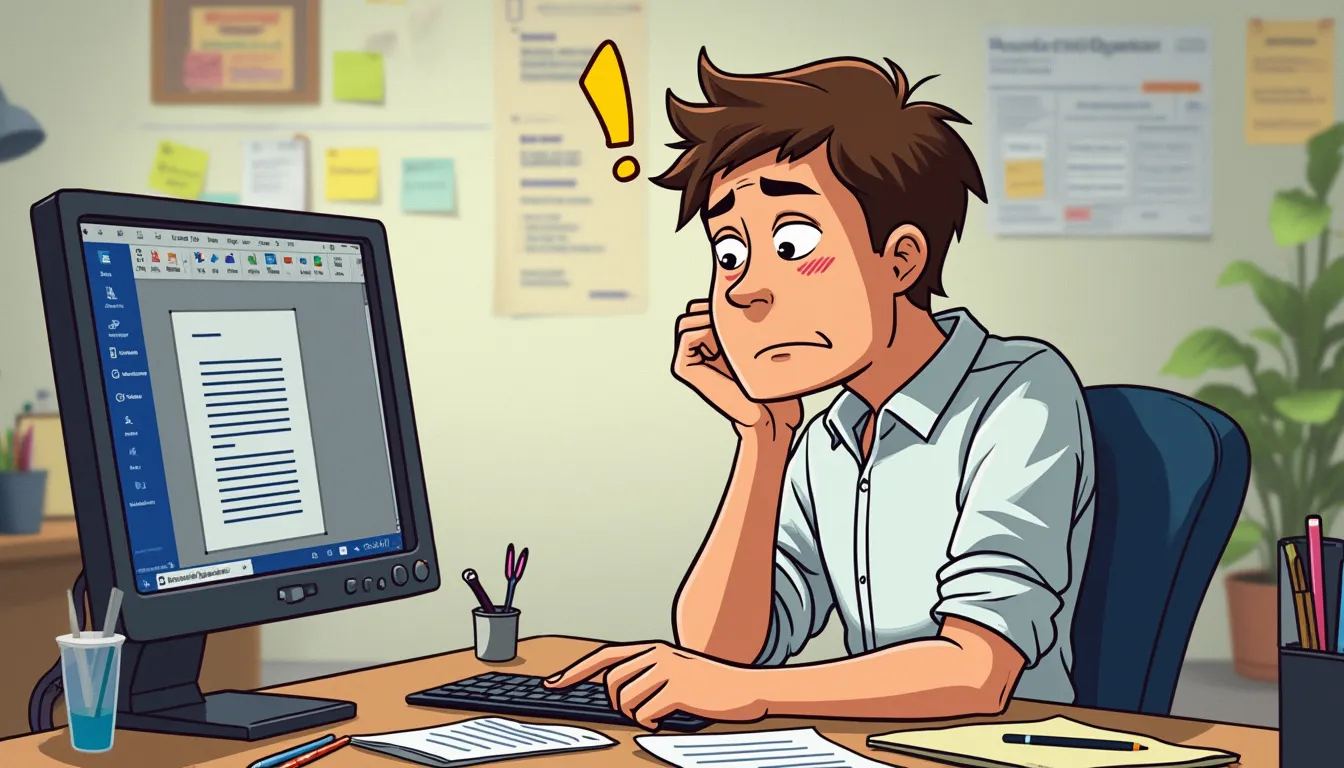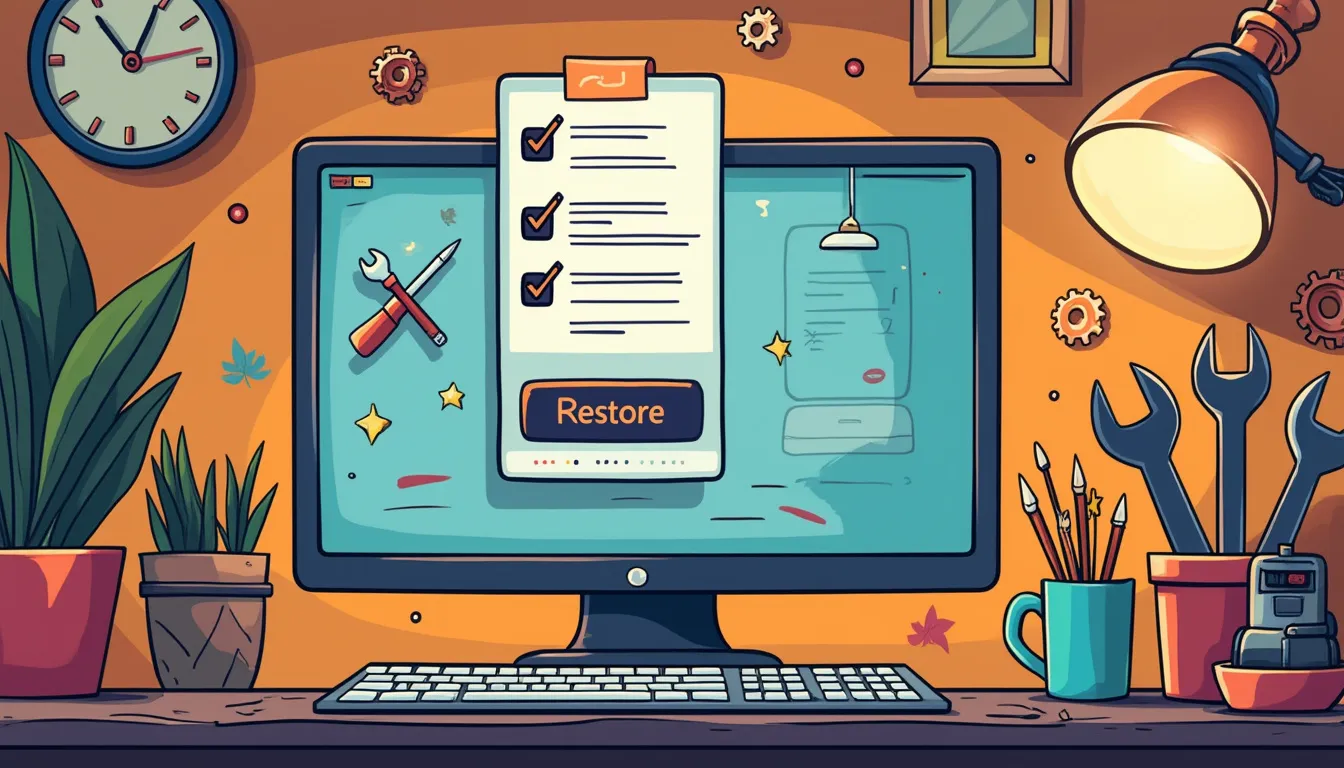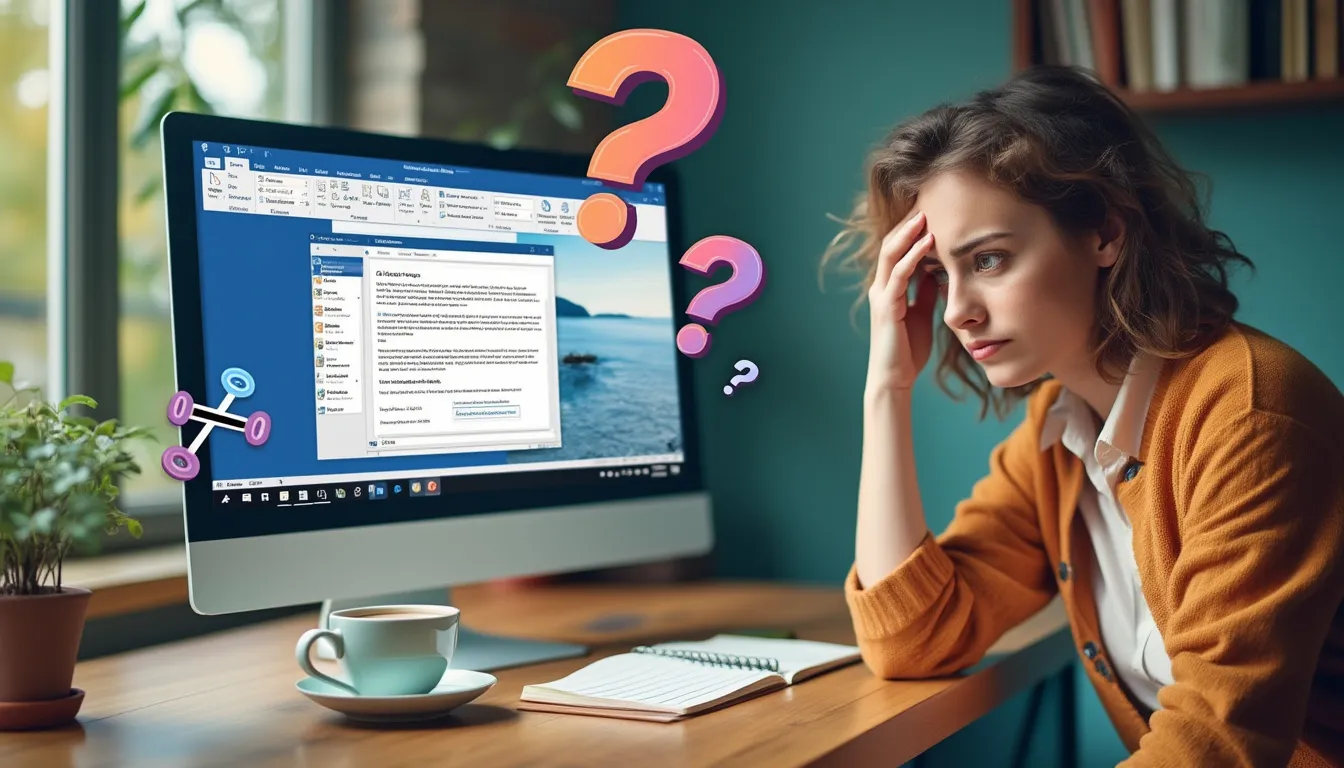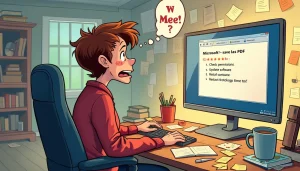Last Updated: September 6, 2024
Are you feeling a bit lost with your Microsoft Word toolbar mysteriously missing? Don’t worry, you’re not alone! The toolbar is like your trusty sidekick when it comes to productivity, and missing it can feel like going into battle without your armor.
In this article, we’ll dive into the common culprits that could be hiding your beloved toolbar and arm you with simple, step-by-step solutions to troubleshoot your Microsoft Word toolbar missing. From accidental customization to pesky software glitches, we’ve got you covered. Say goodbye to frustration and hello to efficiency as we guide you through the troubleshooting journey. Let’s bring that toolbar back to where it belongs!
Table Of Contents
- 1 Common Causes of Missing Microsoft Word Toolbar
- 2 External Resources
- 3 II. Common Causes of Missing Microsoft Word Toolbar
- 4 Conclusion
Common Causes of Missing Microsoft Word Toolbar
Understanding the common causes of a missing Microsoft Word toolbar is crucial for troubleshooting effectively. Here are the primary culprits you might encounter:
A. Accidental Customization or Hiding of the Toolbar
1. Accidental Hiding: Sometimes, in a quest for more screen space, you might accidentally hide the toolbar. This often happens when you minimize the ribbon. To check if this is the case, look for the small arrow or double-click on any of the tabs to toggle it back into view.
2. Identifying if the Toolbar is Minimized or Docked: If your toolbar is minimized, simply look at the top of your document and click on any tab (e.g., Home, Insert) to see if the toolbar appears. If it’s not showing, it might have been docked off to the side, or even completely hidden. Use the shortcut Ctrl + F1 to toggle the ribbon display on and off.
B. Software Glitches or Updates Affecting Toolbar Visibility
Software updates are meant to improve your experience, but they can sometimes backfire.
1. Signs of Software Errors: Are you encountering unexpected error messages or crashes? These can be signs that something is off with your Word installation, potentially affecting toolbar visibility.
2. Impact of Recent Updates on Toolbar Settings: Updates can occasionally reset your customized settings. If you notice missing features or unfamiliar appearances after an update, your toolbar settings may have been altered. Always check for any related settings that might have changed during the update.
C. User Profile or Settings Corruption
Your user profile in Microsoft Word can sometimes go rogue.
1. Explanation of User Profile Issues: Corruption can happen for a myriad of reasons, such as conflicts with other software. A corrupted profile can lead to missing toolbars or faulty features within Word.
2. Identifying Corrupt Settings and Their Effect on the Toolbar: If your toolbar behaves erratically or disappears without reason, it might be time to investigate your profile. Look out for any odd behavior, such as constantly losing customizations or feature misaligning.
| Common Causes | Signs & Solutions |
|---|---|
| Accidental Customization | Toolbar hidden; Use Ctrl + F1 to toggle |
| Software Glitches | Unexpected error messages; Check update history |
| User Profile Issues | Erratic behavior; Consider creating a new profile |
By understanding these common causes, you’re already on your way to learning how to troubleshoot the Microsoft Word toolbar missing issue effectively. Each root cause can lead you to a different solution, and identifying the problem is half the battle!
External Resources
For further reading and to enhance your troubleshooting skills, check out the following links:
– Microsoft Support: Troubleshooting Toolbar Issues
– How to Repair Microsoft Office Suite
– Create a New User Profile in Windows
(Note: Always back up your files and customize settings before making changes to software or user profiles to prevent data loss.)

II. Common Causes of Missing Microsoft Word Toolbar
A. Accidental customization or hiding of the toolbar
Sometimes, it’s easier than you think to accidentally customize or hide the Microsoft Word toolbar. Let’s take a closer look at how this can happen:
- Unintentional Minimize: Users might click on the wrong setting while exploring the menu, reducing the toolbar visibility.
- Docking Questions: When you dock your toolbar at the edges, it may look like it’s gone, but it’s actually lurking around.
Here’s how to check if your toolbar is minimized or docked:
- Look for the small arrow in the top-right corner of the window. It might just be hiding!
- Hover your cursor around the edges of the screen to see if it pops out – it’s like a game of peek-a-boo!
B. Software glitches or updates affecting toolbar visibility
Refreshes are meant to keep things running smoothly, but sometimes updates create hiccups in the system:
- Signs of Software Errors: Monitor for slow response times, unexpected crashes, or erratic behaviors when opening Word.
- Impacts of Recent Updates: A recent update may alter your toolbar settings brilliantly or vanish them completely!
Check your update history in Windows Update settings. You might discover that the latest patch is the culprit behind your toolbar’s unexpected shyness.
C. User profile or settings corruption
If you’ve exhausted all possibilities, it may be a case of user profile or settings corruption:
- User Profile Issues: Sometimes, Word doesn’t play nice if your user profile has errors. Think of it as every Word user’s gremlin!
- Corrupt Settings: Identifying whether your settings have turned sour is key – a corrupted profile can make your toolbar practically invisible.
Here’s a quick way to check your settings:
- Go to File > Options > Customize Ribbon, and see if it’s still intact.
- If everything seems off, it’s time to consider a fresh profile.
Remember, keeping your Microsoft Word toolbar in check isn’t just crucial; it’s essential for your productivity. So, if you notice something that seems amiss, dive into these common causes to troubleshoot the Microsoft Word toolbar missing issues swiftly!

Step-by-Step Troubleshooting Solutions
A. Restoring the Toolbar to Default Settings
If you find your toolbar playing hide and seek, one of the first things you should try is to restore it to its default settings. Follow these simple steps:
- Open Microsoft Word: Launch your Microsoft Word application.
- Access Options: Go to the File tab on the upper left corner and select Options.
- Customize Ribbon: Click on the Customize Ribbon option on the left sidebar.
- Reset Defaults: Look for the “Reset” button at the bottom right and select “Reset all customizations.”
This restores the toolbar to its original glory. But guess what? You might still want to customize it later. Don’t panic; you can revisit the customization options just by clicking on the “Customize Ribbon” button again after the reset.
B. Repairing Microsoft Office Installation
Sometimes the hidden culprit behind a missing toolbar could be a corrupt installation of Microsoft Office. Here’s how you can give it a quick fix:
- Open Control Panel: Click on the Start menu and type Control Panel. Hit enter.
- Locate Programs: Click on Programs and then Programs and Features.
- Find Microsoft Office: Scroll down to find Microsoft Office in the list.
- Repair: Right-click on it and select “Change.” Then choose “Repair” and hit “Continue.”
This process may take a few minutes, but it’s worth the wait! Remember to keep your Office applications updated regularly. Microsoft often releases patches for known issues, which helps maintain smooth sailing with your toolbar.
C. Creating a New User Profile
If you’ve tried everything and your Microsoft Word toolbar is still playing hard to get, creating a new user profile can be a smart move. Here’s how you can do it hassle-free:
- Open Control Panel: Just like before, access your Control Panel.
- Select User Accounts: Click on User Accounts and then “Manage another account.”
- Create a New Account: Click on “Add a new user in PC settings.”
- Complete the Setup: Follow the instructions to create a new profile — it’s pretty straightforward.
Starting fresh with a new profile can eliminate any lurking corrupt settings. You might find your toolbar back and even some revamped productivity!
Quick Recap of Solutions
| Troubleshooting Step | Instructions |
| Restore the Toolbar to Default Settings | Access options through File, customize the ribbon and reset. |
| Repair Microsoft Office Installation | Use the Control Panel to locate the Office and repair it. |
| Create a New User Profile | Go to user accounts in the Control Panel and set up a new profile. |
Now that you have a handy toolbox of methods to troubleshoot your Microsoft Word toolbar missing issue, feel free to pick and choose which solutions fit best! It’s like a mini-adventure — and every little step brings you closer to finding that elusive toolbar!
For more tips on Microsoft Office, check out Microsoft’s Official Support Page.
Conclusion
Troubleshooting a missing Microsoft Word toolbar can seem daunting, but with a methodical approach, it can be resolved quickly. We highlighted common causes such as accidental customization, software glitches, and user profile corruption, so you can pinpoint the issue with ease.
To get your toolbar back, remember these key steps: restore default settings by following the provided instructions, repair your Microsoft Office installation using the Control Panel, and if all else fails, consider creating a new user profile to start afresh.
Don’t forget the importance of keeping your software updated and regularly checking your toolbar settings to prevent future mishaps. The next time you find your toolbar missing, don’t panic; just follow these troubleshooting tips and you’ll have your productivity tools back in no time!





